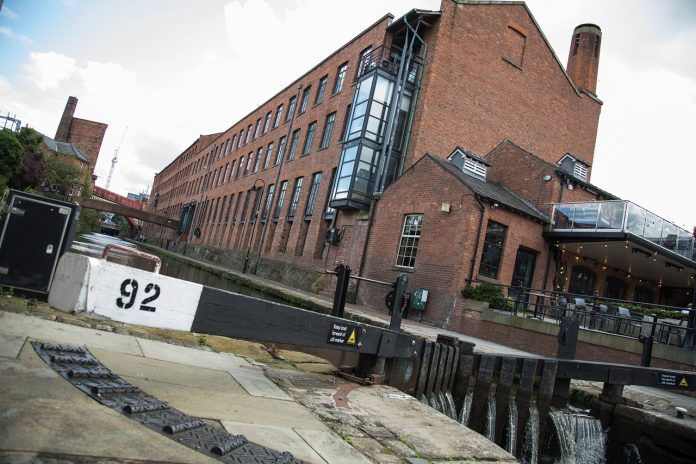Manchester’s trajectory through industrial history is etched with pivotal moments that have intricately defined the city. In the 18th century, it surged as the nucleus of the Industrial Revolution, spearheading advancements in textile manufacturing and mechanization. The inception of the Bridgewater Canal in 1761 strategically facilitated the movement of raw materials, propelling industrial expansion. In the 19th century, Manchester ascended as a global cotton powerhouse, the Cottonopolis era embellishing the skyline with mills. The late 20th century witnessed economic shifts triggering deindustrialization, reshaping Manchester’s property panorama. Derelict mills underwent strategic fortunes into residential and commercial spaces. The city’s tenacity and adaptability epitomize its industrial legacy, architectural remnants standing as a testament to its evolution amidst dynamic economic landscapes.
Rise of Investment Opportunities
Economic Shifts and Urban Renewal
Manchester’s property market has seen a surge in investment opportunities, attributed to several key economic factors. The city’s robust economic diversification, particularly in sectors like technology, finance, and healthcare, has attracted businesses and professionals, driving demand for real estate. Infrastructure development, including the expansion of transportation networks, has enhanced accessibility and connectivity, making Manchester an appealing investment destination. Moreover, government initiatives and urban regeneration projects have revitalized neighborhoods, increasing property values. The city’s lower living costs compared to London and its status as a cultural hub further contribute to its attractiveness for investors, fostering sustained growth in the property market.
Infrastructure Development
Infrastructure projects play a pivotal role in elevating Manchester’s allure for investors and catalyzing property development. Ongoing initiatives, such as transportation network expansions and improved connectivity, enhance accessibility within the city, attracting businesses and residents alike. Modernized infrastructure not only streamlines daily commutes but also makes underdeveloped areas more appealing for investment. Additionally, these projects contribute to urban regeneration, transforming neighborhoods and increasing property values. The positive synergy between infrastructure development and property growth positions Manchester as an attractive investment destination, offering investors the prospect of long-term returns amidst a dynamic and thriving urban landscape.
Emerging Real Estate Trends
Manchester’s real estate landscape is dynamic, with current and emerging trends reflecting a diverse range of investment opportunities. The city’s increasing focus on sustainable development has led to a surge in eco-friendly and energy-efficient properties, aligning with global environmental concerns. The rise of mixed-use developments, combining residential, commercial, and recreational spaces, caters to a multifaceted urban lifestyle. Furthermore, adaptive reuse of historic buildings continues, preserving architectural heritage while meeting contemporary needs. The booming technology sector has fueled demand for smart homes and co-working spaces, presenting innovative investment avenues. Manchester’s evolving real estate market showcases a blend of traditional charm and modern functionality, offering investors a multifaceted portfolio.
Manchester’s Neighborhood Spotlight
Trendy Areas for Investment
Investors are increasingly drawn to specific neighborhoods in Manchester, each offering unique appeal. Ancoats, once an industrial hub, is now a cultural hotspot with trendy eateries and converted warehouses. The Northern Quarter’s creative vibe and vibrant street art contribute to its popularity. Castlefield, characterized by canals and historic charm, appeals to those seeking a blend of history and modern living. The Salford Quays redevelopment has transformed the waterfront into a thriving commercial and residential hub. With excellent transport links and ongoing regeneration projects, these neighborhoods showcase Manchester’s diverse investment landscape, catering to varying preferences and contributing to the city’s overall urban renaissance.
Potential for Growth and Appreciation
Selected neighborhoods in Manchester exhibit substantial growth potential and property value appreciation. Ancoats has experienced a remarkable 34% increase in property values over the past five years, fueled by its transformation into a cultural enclave. The Northern Quarter, with a 28% growth, benefits from its trendy atmosphere, attracting young professionals. Castlefield, with a 24% rise, showcases resilience and enduring charm. Salford Quays, undergoing a 20% growth, benefits from ongoing redevelopment, boosting its appeal. These figures underscore the robust demand and investment attractiveness of these neighborhoods, affirming Manchester’s status as a flourishing real estate market with promising returns on investment.
Future Outlook and Projections
Economic and Property Market Projections
Economic and property market projections in Manchester indicate a promising future for investors. With the city’s emphasis on sustainable development and continued infrastructure projects, property values are anticipated to appreciate. The rise of technology-driven industries and the city’s status as a cultural hub are likely to fuel demand for innovative living spaces. Emerging trends include smart home technologies and mixed-use developments, presenting diverse investment opportunities. Government initiatives supporting urban regeneration further enhance Manchester’s appeal. As the city continues to attract businesses and professionals, real estate investors can anticipate sustained growth, making Manchester an attractive destination for those seeking a dynamic and lucrative property market with long-term potential.
Frequently Asked Questions
What role did Manchester’s industrial history play in shaping its current property market?
Manchester’s industrial legacy catalyzed urban development. Former industrial sites transformed into sought-after properties, blending historical charm with modern amenities, creating a unique appeal for investors.
How have infrastructure projects influenced Manchester’s property investment prospects?
Ongoing infrastructure developments enhance connectivity, making underdeveloped areas attractive. This, coupled with urban regeneration, boosts property values, positioning Manchester as a lucrative investment destination.
Which neighborhoods in Manchester are gaining popularity among investors, and why?
Ancoats, Northern Quarter, Castlefield, and Salford Quays are gaining traction. Factors include cultural resurgence, creative ambiance, historical charm, and waterfront redevelopment, collectively contributing to diverse investment opportunities in these thriving Manchester neighborhoods.
Conclusion
Manchester’s property landscape has undergone a remarkable transformation, shaped by its industrial history and propelled by strategic investments. The city’s evolution from an industrial powerhouse to a thriving urban center is evident in the adaptive reuse of historical structures and ongoing infrastructure projects. Key neighborhoods like Ancoats, Northern Quarter, Castlefield, and Salford Quays exemplify the diverse investment opportunities arising from cultural resurgence, creative ambiance, and waterfront redevelopment. With substantial property value appreciation in these areas and a commitment to sustainable development, Manchester presents a promising future for investors seeking a blend of historic charm, modern amenities, and long-term returns.







